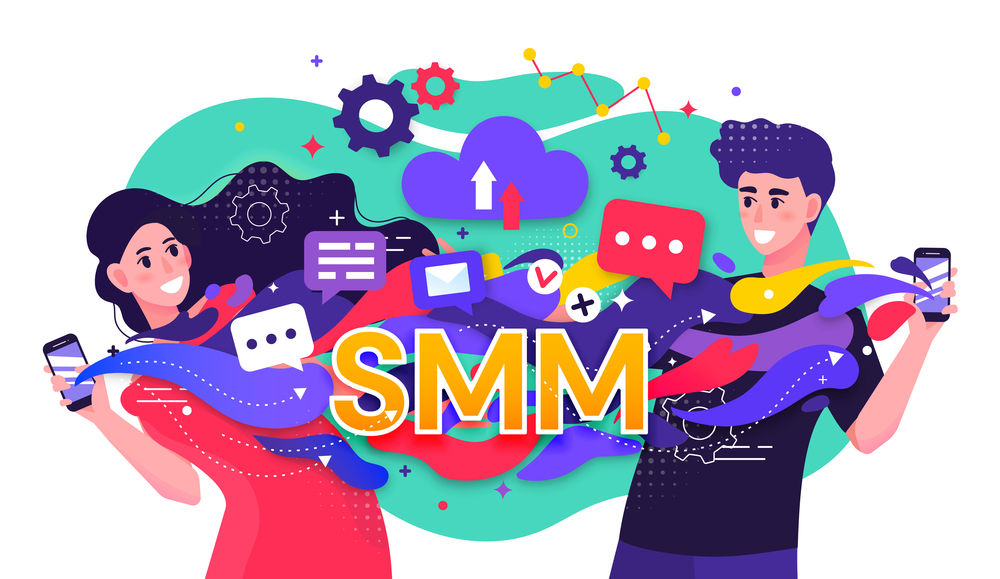Master Your Outreach: Streamlined Social Media Management Features

In today’s digital age, social media has become a cornerstone of marketing and communication strategies. Businesses, from small startups to multinational corporations, leverage social media platforms to connect with their audience, promote their products or services, and build their brand. However, managing multiple social media accounts efficiently can be challenging. This is where streamlined social media management features come into play, offering tools and functionalities to simplify and enhance your outreach efforts. In this blog post, we will explore various social media management features that can help you master your outreach.
1. Centralised Dashboard
A centralised dashboard is the heart of any effective social media management tool. It allows you to manage all your social media accounts from a single interface. This feature saves time and reduces the complexity of switching between different platforms. With a centralised dashboard, you can schedule posts, monitor engagement, and analyse performance across multiple social networks, including Facebook, Twitter, Instagram, LinkedIn, and more.
Benefits:
- Efficiency: Streamlines the process of managing multiple accounts.
- Consistency: Ensures a consistent brand voice across different platforms.
- Time-saving: Reduces the time spent switching between accounts.
2. Content Scheduling
One of the most powerful features of social media management tools is content scheduling. This feature allows you to plan and schedule your posts in advance. You can create a content calendar, ensuring that your social media presence remains active even during off-hours or holidays. Scheduling posts in advance also allows for better planning and coordination of your marketing campaigns.
Benefits:
- Consistency: Maintains a steady flow of content.
- Flexibility: Enables posting during peak engagement times.
- Planning: Helps in organising and executing marketing campaigns effectively.
3. Analytics and Reporting
Analytics and reporting features provide insights into the performance of your social media activities. These tools offer metrics such as engagement rates, reach, impressions, click-through rates, and more. By analysing these metrics, you can gauge the effectiveness of your content, understand your audience better, and make data-driven decisions to improve your social media strategy.
Benefits:
- Insightful: Offers valuable data to inform your strategy.
- Measurable: Tracks the success of campaigns and posts.
- Data-driven: Facilitates informed decision-making.
4. Social Listening
Social listening involves monitoring social media channels for mentions of your brand, competitors, or relevant keywords. This feature helps you stay informed about what is being said about your brand and industry. Social listening tools can provide real-time alerts, allowing you to respond promptly to both positive and negative mentions.
Benefits:
- Awareness: Keeps you informed about brand perception.
- Engagement: Enables timely responses to customer feedback.
- Competitive Insight: Provides information about competitors and industry trends.
5. Engagement Tools
Engagement tools are designed to help you interact with your audience more effectively. These features include responding to comments and messages, liking and sharing posts, and engaging with followers. Some tools also offer automated responses, which can be useful for handling common queries or directing users to relevant resources.
Benefits:
- Responsive: Enhances your ability to respond quickly to audience interactions.
- Interactive: Fosters a stronger connection with your audience.
- Efficiency: Saves time with automated responses for common inquiries.
6. Collaboration Features
For teams managing social media accounts, collaboration features are essential. These tools enable multiple users to work together seamlessly. You can assign tasks, approve content, and manage user permissions, ensuring that everyone is on the same page and contributing effectively to the social media strategy.
Benefits:
- Coordination: Facilitates teamwork and collaboration.
- Oversight: Ensures content approval processes are followed.
- Efficiency: Streamlines task management and workflow.
7. Content Curation
Content curation tools help you find and share relevant content from around the web. By curating content, you can provide value to your audience and position your brand as a thought leader in your industry. These tools often include features like RSS feeds, content suggestions, and the ability to schedule curated content alongside your original posts.
Benefits:
- Value-add: Enhances the value of your social media content.
- Authority: Positions your brand as a knowledgeable industry leader.
- Engagement: Keeps your audience engaged with diverse content.
8. Audience Segmentation
Understanding your audience is key to effective social media marketing. Audience segmentation tools allow you to categorize your followers based on various criteria such as demographics, interests, and behaviors. This segmentation enables you to tailor your content and campaigns to different audience groups, increasing relevance and engagement.
Benefits:
- Personalization: Delivers more relevant content to different audience segments.
- Targeting: Improves the effectiveness of marketing campaigns.
- Insightful: Provides deeper understanding of audience demographics and preferences.
9. Integration with Other Tools
Social media management tools often integrate with other marketing and business tools such as CRM systems, email marketing platforms, and analytics software. These integrations enable seamless data flow and provide a more comprehensive view of your marketing efforts. By integrating your social media management tool with other systems, you can streamline workflows and enhance overall efficiency.
Benefits:
- Comprehensive: Provides a holistic view of marketing efforts.
- Streamlined: Enhances workflow efficiency through seamless data integration.
- Insightful: Offers deeper insights by combining data from multiple sources.
10. Mobile Access
In a world where mobility is essential, having access to your social media management tool on mobile devices is crucial. Mobile access ensures that you can manage your social media accounts, schedule posts, and respond to engagement on the go. This feature is particularly useful for businesses that require real-time social media management, such as events or live updates.
Benefits:
- Flexibility: Allows management of social media accounts from anywhere.
- Real-time: Enables immediate responses and updates.
- Convenience: Facilitates social media management on the go.
Conclusion
Mastering your social media outreach requires the right set of tools and features. A robust social media management tool with a centralised dashboard, content scheduling, analytics, social listening, engagement tools, collaboration features, content curation, audience segmentation, integrations, and mobile access can significantly enhance your efficiency and effectiveness. By leveraging these features, you can streamline your social media efforts, engage more effectively with your audience, and achieve your marketing goals.
As the digital landscape continues to evolve, staying ahead with advanced social media management features will be essential for businesses aiming to maintain a strong online presence. Invest in a comprehensive social media management tool and unlock the potential to master your outreach, drive engagement, and grow your brand in the competitive world of social media.
Boost Your B2B SaaS with Specialist Link Building Strategies


